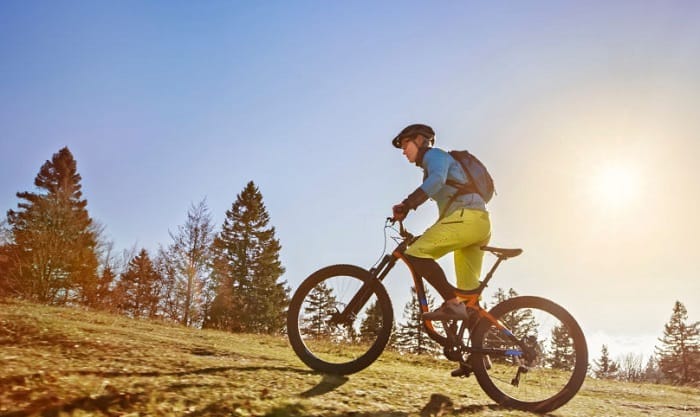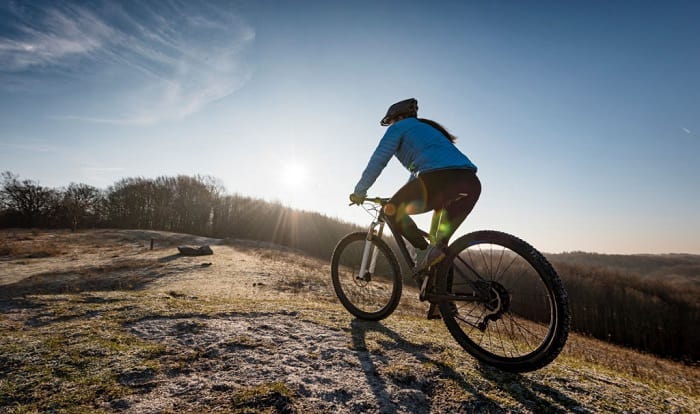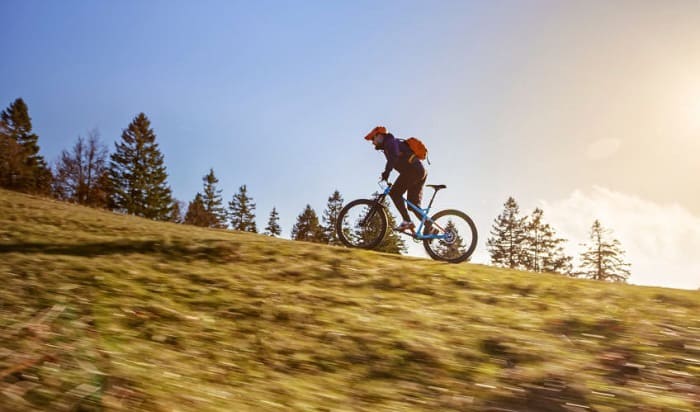Mastering the basics of how bike gears work keeps you in tune with your speed, performance, and energy level. Choosing the right gear on downhill and uphill rides can save energy and muscle power. Hills are nothing when you know what gear to use when going uphill on a bike.
If you are climbing a hill on a bicycle, using a lower gear is better than a higher one. A smaller gear can help you accelerate faster without requiring too much effort in each pedal stroke.
Table of Contents
Choosing Between High Gear Vs Low Gear
The bike gearing system is a vital component of a bicycle. It helps riders to be comfortable pedaling on different kinds of terrains. A bike gear can improve efficiency when riding on downhill or uphill slopes.
If you understand the fundamentals of using bike gear, you will be more comfortable pedaling on various terrains without experiencing fatigue or muscle soreness. You should know what gear to choose when riding both downhill or uphill. Transitioning from one gear to another based on terrain and conditions will let you move forward seamlessly and more efficiently.
High gear for downhill
High gear is required for riding a downward slope.
Choosing a bigger gear will allow you to accelerate at a faster speed while still giving you control over the pedal and the bike wheels. This can be achieved if you choose a chain-ring with more teeth and a cog with fewer teeth on your bike cassette. Ideally, a chain-ring between 32 to 40 along with an 11-36 cassette is the best bike gears uphill.
Low gear for uphill
On the other hand, when climbing a hill with your bike, a lower gear is advisable. You will feel more tired and get frustrated when you choose the wrong bicycle uphill gear. It will drain your strength when pedaling.
You can achieve the lower gear ratio with a smaller chainring, and a bigger cog on the cassette. Choosing a lower gear requires less strength for every pedal stroke. In this way, you will put less effort and energy while riding. You can maintain optimum performance and display efficiency during your ride when you use a lower gear ratio as well.
For flat and even terrains, you can use an average gear ratio. You can choose among 49/16, 49/13, 48/16, 46/18, 46/17, 46/16. Take note that these numbers correspond to the chain-ring and cassette on a bicycle.
Knowing When to Shift Gears
Choosing the right gear is one thing, but knowing when to shift gear is another. When you are navigating a particularly different road, you have no idea what kind of terrain you will be taking. Roads are usually uneven with downward and upward slopes.
Changing from one gear to another is vital to maintain your biking efficiency and performance. It is essential to find the right time to shift your bike gear. Thus, here are some tips you can follow for proper bike gearing for hills:
Anticipating your terrain
The key to proper gear shifting is knowing what kind of slope or terrain you are heading to. If you foresee an upward slope, you must shift into biking uphill gears before you start climbing the slope. It is not recommended to shift gear when you are in the middle of traversing the road.
If you shift mid-way, you will need to put much pressure and effort on the pedals, leaving you exhausted and sore. Remember to shift one gear at a time and gradually put less pressure on the pedals while you are changing the gear.
Using the wrong gear while going uphill can easily wear out your drivetrain, and make you feel fatigued.
Choose an easier gear when playing safe
If you are a beginner, and you have not mastered the different kinds of gear, you can always choose the easier bike gears for hills. In this way, you can pedal at an average without compromising your speed and acceleration. Also, choosing a higher level of gear can make you pedal slower while putting much energy in a harder gear.
Practice one shifting at a time
To strain yourself and your bicycle too much, you should change gear one shifter at a time. It is not advisable to shift both the front and rear gears all at once. Shifting should be made gradually and not aggressively, so you can still maintain the same performance when biking.
Read more: Ways to fix bike gears that won’t shift.
Conclusion
With that, you have got bike gears explained! Gear is one of the most important components of your bike that converts the energy you put into the pedals. It allows you to control speed, maintain balance, and ensure a more efficient ride.
Mastering what gear to use when going uphill on a bike makes you a more knowledgeable and confident biker. May the guide above provide you with the right information on what bike gear for uphill, downhill, and even average road or terrain.

“I ride my bike to work for years, but is that enough? Our carelessness towards our surroundings has taken a toll on the environment. And now, everyone is responsible for changes; even the most minor contribution is counted. With this hope and spirit, I started with my partner to establish Biketoworkday to help more individuals commute to their work sites on their bikes.”



